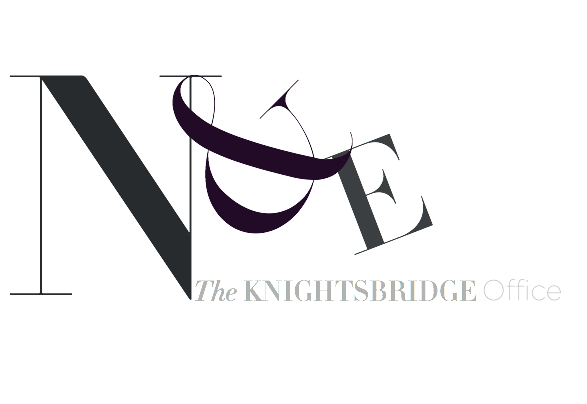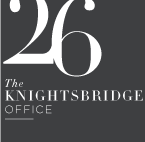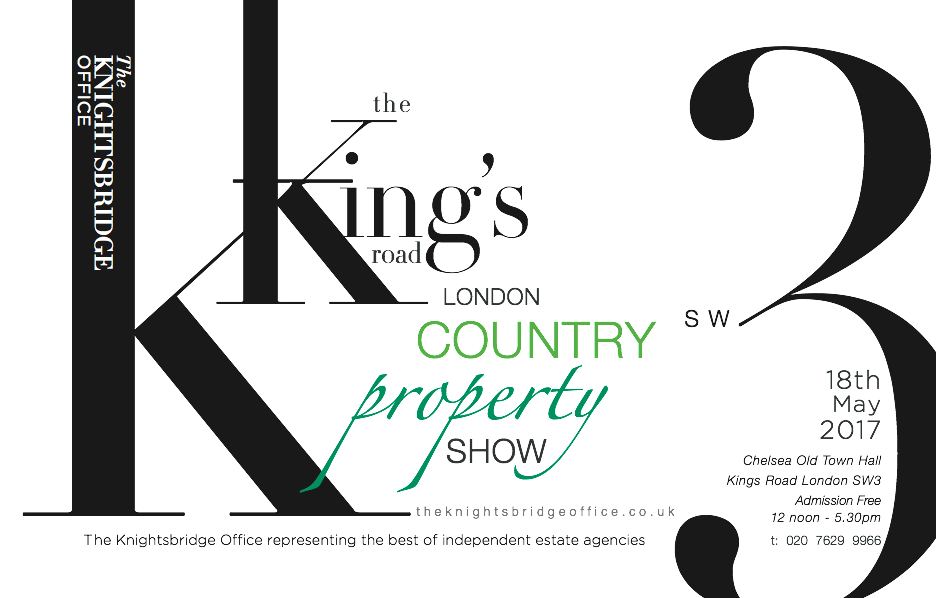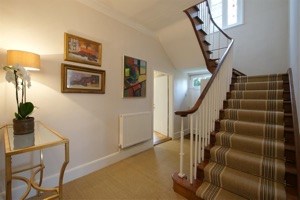

Jan 2017
COMMENT JANUARY 2017

Headline statistics
For November 2016:
-
•the average price of a property in the UK was £217,928
-
•the annual price change for a property in the UK was 6.7%
-
•the monthly price change for a property in the UK was 1.1%
-
•the monthly index figure for the UK was 114.3 (January 2015 = 100)
Estimates for the most recent months are provisional and are likely to be updated as more data is incorporated into the index. Read the revision policies.
Economic statement
Housing market indicators for October suggested a period of modest increasing demand and steady growth in price levels. House prices grew by 6.7% in the year to November, 0.3 percentage point lower than September. According to the Bank of England’s Agents’ summary of business conditions, for for the final quarter of 2016 (October to December), housing market activity ha recovered following a period of weakness after the EU referendum and stamp duty changes but remains weak in central London.
Between 2012 and the beginning of 2016, annual house price growth in London was generally the fastest of all regions in the UI. Annual house price growth in the East of England and the South East has now surpassed that of London for the 4th month in a row.
In terms of housing demand, the Royal Institution of Chartered Surveyors (RICS) market survey for November reported a modest increase in new buyer enquiries. According to the Bank of England the volume of lending approvals for house purchase (seasonally adjusted) increased by 0.2% from October to November 2016, although this is still 3.7% lower than November 2015. The number of home sales in the UK (seasonally adjusted)increased by 0.8% between October and November 2016 according to UK Property Transaction statistics, 7.3% lower than November 2015.
On the supply side RICS reported no change in listings in November 2016 compared to October 2016. ONS Construction output in October 2016 reported total new housing was 12.6% higher than in October 2015.
HOUSE PRICE INDEX REPORT
Next Full index is due to be released: on 14th Feb 2017
Jan 2017
Headline statistics
For December 2016:
-
•the average price of a property in the UK was £219,544
-
•the annual price change for a property in the UK was 7.2%
-
•the monthly price change for a property in the UK was 1.4%
-
•the monthly index figure for the UK was 115.2 (January 2015 = 100)
Estimates for the most recent months are provisional and are likely to be updated as more data is incorporated into the index. Read the revision policies.
Economic statement
Housing market indicators for December suggested a period of modest increasing demand and steady growth in price levels. House prices grew by 7.2% in the year to December, 1.1 percentage point higher than November. However, this still remains below the level of annual growth seen in the first half of the year.
According to the Bank of England’s Agents’ summary of business conditions, for for the final quarter of 2016 (October to December), housing market activity has recovered in all areas apart from central London. The report noted strong competition in mortgage lending which may reflect the prolonged period of low interest rates.
In terms of housing demand, the Royal Institution of Chartered Surveyors (RICS) residential market survey for December reported a marginal increase in new buyer enquiries. This slight change is also reflected in the UK Property Transaction statistics. These show the number of home sales in the UK (seasonally adjusted) increased by 0.2% between November and December 2016, but compared with December 2015 there were 8.5% less home sales.
The Bank of England Approvals for lending secured on dwellings show that in December the total number of approvals increased 1.6% compared with November 2016. The December 2016 number of approvals was 3.9% higher than in December 2015.
On the supply side RICS reported a 10th consecutive month with no improvement in national listings. ONS Construction output in November 2016 reported total new housing was 12.7% higher than in November 2015. The ONS Construction output for November 2016 showed that in the period from January 2014 to November 2016, 36.5% more new housing was built that in the period from January 2011 to November 2013.
HOUSE PRICE INDEX REPORT
Next Full index is due to be released:
21st March 2017
News
Feb 2017
March 2017
SAVE THE DATE.. ..


Headline statistics
For January 2017:
-
•the average price of a property in the UK was £218,255
-
•the annual price change for a property in the UK was 6.2%
-
•the monthly price change for a property in the UK was 0.8%
-
•the monthly index figure for the UK was 114.5 (January 2015 = 100)
Estimates for the most recent months are provisional and are likely to be updated as more data is incorporated into the index. Read the revision policies.
Economic statement
Housing market indicators for January suggested moderate demand which continues to outmatch supply. House prices grew by 6.2% in the year to January 2017, 0.5 percentage points higher thanDecember 2016. However, this still remains below the level of annual growth seen in 2016 which was 7.4%
The Royal Institution of Chartered Surveyors (RICS) residential market survey for January 2017 reported little change in transaction volumes and new buyer enquiries between January 2017 and December 2016. On the supply side RICS reported an 11th consecutive month with no improvement in national listings of houses. London was reported as the only area where near term prices expectations are negative, whilst in all other UK regions price expectations are positive.
The Bank of England Approvals for lending secured on dwellings for January 2017 show that the volume of approvals for house purchase decreased by 3.9% compared to January 2016. However the total volume of approvals for lending secured on dwellings, which includes remortgaging and other purposes, increased by 3.2% from January 2016 to January 2017. The Bank os England’s Agents’ summary for February 2017 reported that housing market activity had been sluggish overall, and was expected to remain so over the coming year.
ONS Construction output in December 2016 reported total new housing was 5.7% higher than in December 2015. For the ¡3 months from December 2015 to December 2016 the 12 months growth rate of total new housing has been positive however this does not appear to have alleviated housing demand outstripping supply.
HOUSE PRICE INDEX REPORT
Next Full index is due to be released:
11th April 2017
News
News
Event

28th April, 2017 09.15 am
The Executive Suite
Wyboston Lakes
St Neots, Cambridgeshire
t: 0333 305 5141
Next Full index is due to be released:
16th May 2017
Headline statistics
For February 2017:
-
•the average price of a property in the UK was £217,502
-
•the annual price change for a property in the UK was 5.8%
-
•the monthly price change for a property in the UK was 0.6%
-
•the monthly index figure (January 2015 = 100) for the UK was 114.1
Estimates for the most recent months are provisional and are likely to be updated as more data is incorporated into the index. Read the revision policies.
Economic statement
Housing market indicators for February suggested slowing demand and continued tight supply. UK House prices grew by 5.8% in the year to February 2017, 0.5 percentage points higher than January 2017. However this still remains below the average annual house price growth seen in 2016 which was 7.3%.
In terms of housing demand the Royal Institute of Chartered Surveyors’ (RICS) residential market survey for February 2017 reported that housing market activity remained subdued. Transaction volumes and new buyer enquiries are broadly unchanged since November 2016. Despite this, RICS expect near term price expectations to remain positive, albeit steady.
RICS’ new buyer enquiries figures are supported by the Bank of England approvals for lending secured on dwellings for February 2017 which showed that the volume of approvals for house purchase decreased by 5.6% compared to February 2016.
The UK Property Transaction statistics showed that in February 2017 the total number of seasonally adjusted property transactions completed in the UK with value of £40,000 or above decreased by 1.9% compared with February 2016. This is consistent with the Bank of England’s Agents’ summary (PDF) for February 2017 which reported that housing market activity had been sluggish overall, and was expected to remain so over the coming year.
On the supply side RICS reported the 12th consecutive month with no improvement in national listings of houses. RICS reported tight supply conditions across a majority of the regions.
HOUSE PRICE INDEX REPORT
News
Next Full index is due to be released:
13th June 2017
Headline statistics
For March 2017:
-
•the average price of a property in the UK was £215,848
-
•the annual price change for a property in the UK was 4.1%
-
•the monthly price change for a property in the UK was -0.6%
-
•the monthly index figure (January 2015 = 100) for the UK was 113.2
Estimates for the most recent months are provisional and are likely to be updated as more data is incorporated into the index. Read the revision policies.
Economic statement
UK House prices grew by 4.1% in the year to March 2017, 1.5 percentage points lower than in the year to February 2017.
In terms of housing demand, theRoyal Institute of Chartered Surveyors’ (RICS) residential market survey for March 2017 reported that housing market activity remained “relatively subdued”. New buyer enquiries and agreed sales remain broadly unchanged since the start of the year. This is consistent with UK Property Transaction statistics which showed that in March 2017 the total number of seasonally adjusted property transactions completed in the UK with value of £40,000 or above has remained at a similar level for the last 3 months.
According to the Bank of England’s Agent’s summary of business conditions, PDF, some estate agents noted the number of properties on their books was “less than half pre-crisis norms” with “modest excess demand” supporting “low-level house price inflation”. In London, the same report noted that properties were taking longer to sell and that house price inflation had “eased significantly”. This is confirmed by the latest UK HPI estimate for London for the year to March 2017 at 1.5%, 3.2 percentage points lower than February 2017.
On the supply side, RICS reported that sales instructions continued to fall in March. They also reported that average estate agents stock levels fell to a new record low, which they report is weighing on sales activity.
HOUSE PRICE INDEX REPORT
May 2017
April 2017
April 2017
News
Next Full index is due to be released:
18th July 2017
Headline statistics
For April 2017:
-
•the average price of a property in the UK was £220,094
-
•the annual price change for a property in the UK was 5.6%
-
•the monthly price change for a property in the UK was 1.6%
-
•the monthly index figure (January 2015 = 100) for the UK was 115.4
Estimates for the most recent months are provisional and are likely to be updated as more data is incorporated into the index. Read the revision policies.
Economic statement
UK House prices grew by 5.6% in the year to April 2017, 1.1 percentage points higher than in the year to March 2017.
In terms of housing demand, the Royal Institution for Chartered Surveyors’ (RICS) residential market survey for April 2017 reported that price expectations are moderately positive while new buyer enquiries remain low.
The UK Property Transaction statistics showed that in April 2017 the total number of seasonally adjusted property transactions completed in the UK with value of £40,000 or above increased by 20.3% compared to April 2016. The unusually low level of transactions in April 2016 was associated with the introduction of the higher tax rates on additional properties introduced in this month. Comparing April 2017 to March 2017, property transactions fell by 3.2%.
Looking closer at the regional level of the UK, the largest house price growth was in the East of England (8.1%) while the lowest house price growth was in the North East (0.6%) in the 12 months to April 2017. House prices grew by 4.7% in London in the 12 months to April 2017, 1.5 percentage points higher than in the year to March 2017. This is the first time in 11 months that the rate of price growth in London has increased. This is consistent with RICS who have reported negative price expectations in London for the 13 consecutive months to April 2017.
According to the Bank of England Agent’s summary of business conditions May update, housing market activity was subdued on both the demand and supply side.
On the supply side RICS reported that new sales instructions remained negative for the fourteenth month in a row. They also report that average estate agent stock levels remain close to record lows. Further, RICS report “an acute shortage of stock remains a key factor underpinning prices for the time being”.
HOUSE PRICE INDEX REPORT
June 2017
Next Full index is due to be released:
15th August 2017
Headline statistics
For May 2017:
-
•the average price of a property in the UK was £220,713
-
•the annual price change for a property in the UK was 4.7%
-
•the monthly price change for a property in the UK was 0.5%
-
•the monthly index figure (January 2015 = 100) for the UK was 115.8
Estimates for the most recent months are provisional and are likely to be updated as more data is incorporated into the index. Read the revision policies.
Economic statement
UK house prices grew by 4.7% in the year to May 2017, 0.6 percentage points lower than in the year to April 2017. While the annual growth rate has slowed since mid-2016 it has remained broadly around 5% during 2017.
In terms of housing demand the Royal Institute of Chartered Surveyors’ (RICS) residential market survey for May 2017 reported that price expectations remain moderately positive while new buyer enquiries decreased over the month.
The UK Property Transaction statistics showed that in May 2017 the number of seasonally adjusted property transactions completed in the UK with a value of £40,000 or above increased by 13.4% compared to May 2016. The unusually low level of transactions in May 2016 was associated with the introduction of the higher tax rates on additional properties introduced from 1 April 2016. Comparing May 2017 to April 2017, property transactions fell by 3.3%.
Looking closer at the regional level of the UK, the East of England showed the highest annual growth, with prices increasing by 7.5% in the year to May 2017. This was followed by the East Midlands at 7.2%. The lowest annual growth was in the North East, where prices increased by 1.6% over the year, followed by London at 3.0%.
According to the Bank of England Agents’ summary of business conditions for the second quarter of 2017, housing market activity had been subdued in most parts of the United Kingdom, as demand weakened relative to supply.
On the supply side RICS reported that new sales instructions remained negative for the fifteenth month in a row. They also report that average estate agent stock levels remain at all time lows with a lack of supply continuing to support prices.
HOUSE PRICE INDEX REPORT
July 2017
Next Full index is due to be released:
12th September 2017
HOUSE PRICE INDEX REPORT
August 2017
Headline statistics
For June 2017:
-
•the average price of a property in the UK was £223,257
-
•the annual price change for a property in the UK was 4.9%
-
•the monthly price change for a property in the UK was -0.8%
-
•the monthly index figure (January 2015 = 100) for the UK was 117.1
Estimates for the most recent months are provisional and are likely to be updated as more data is incorporated into the index. Read the revision policies.
Economic statement
UK House prices grew by 4.9% in the year to June 2017, 0.1 percentage points lower than in the year to May 2017. While the annual growth rate has slowed since mid-2016 it has remained broadly around 5% during 2017.
In terms of housing demand the Royal Institution of Chartered Surveyors’ (RICS) residential market survey for June 2017 reported that price expectations are marginally positive while new buyer enquiries decreased over the month.
The UK Property Transaction statistics showed that in June 2017 the number of seasonally adjusted property transactions completed in the UK with a value of £40,000 or above increased by 1.0% compared to June 2016. Comparing June 2017 to May 2017, property transactions fell by 3.3%.
Looking closer at the regional level of the UK, the largest house price growth was in the East of England (7.2%) while the smallest house price growth was in the North East (2.5%) in the 12 months to June 2017. The North East has seen the slowest house price annual growth for the past 15 months while the East of England has been the fastest growing annual growth for the past 14 months across English regions.
According to the Bank of England Agents’ summary of business conditions for the second quarter of 2017, housing market activity had been subdued in most parts of the United Kingdom, as demand weakened relative to supply.
On the supply side RICS reported that new sales instructions remained negative for the sixteenth month in a row. They also report that average estate agent stock levels have reached a new all time low with a lack of supply continuing to support prices.
News
News

Next Full index is due to be released:
17th October 2017
HOUSE PRICE INDEX REPORT
September 2017
Headline statistics
For July 2017:
-
•the average price of a property in the UK was £226,185
-
•the annual price change for a property in the UK was 5.1%
-
•the monthly price change for a property in the UK was 1.1%
-
•the monthly index figure (January 2015 = 100) for the UK was 118.6
Estimates for the most recent months are provisional and are likely to be updated as more data is incorporated into the index. Read the revision policies.
Economic statement
UK House prices grew by 5.1% in the year to July 2017, unchanged from the year to June 2017.
In terms of housing demand the Royal Institution of Chartered Surveyors’ (RICS) residential market survey for July 2017 reported that price expectations are close to zero while new buyer enquiries remain slightly negative
The UK Property Transaction statistics showed that in July 2017 the number of seasonally adjusted property transactions completed in the UK with a value of £40,000 or above increased by 8.3% compared to July 2016. Comparing July 2017 to June 2017, property transactions increased by 1.3%.
Looking closer at the regional level of the UK, the largest house price growth was in the East of England (7.5%) while the slowest annual growth was in London (2.8%) in the 12 months to July 2017. This is the 8th consecutive month when house price growth in London has remained below the UK average.
According to the Bank of England Agents’ summary of business conditions for August 2017,housing market activity has remained muted. It reported that the market for new homes remained stronger overall than the secondary market, supported by the Help to Buy scheme.
On the supply side RICS reported that new sales instructions remained negative for the seventeenth month in a row. They also report that average estate agent stock levels remain close to the all time low with a lack of supply limiting choice for potential home buyers
Event
October 2017
Congratulations to Redmayne Arnold & Harris on the three month anniversary of their newly refurbished branch at Shelford.
Do pop in and see their portfolio of properties as well of course the coffee machine which we understand is always on the go!!
Redmayne Arnold & Harris
Shelford Office
30 Wollards Lane
Shelford
Cambridge
CB22 5LZ
t: 01223 800860

News
News
Next Full index is due to be released:
14th November 2017
HOUSE PRICE INDEX REPORT
October 2017
Headline statistics
For August 2017:
-
•the average price of a property in the UK was £225,956
-
•the annual price change for a property in the UK was 5.0%
-
•the monthly price change for a property in the UK was 0.5%
-
•the monthly index figure (January 2015 = 100) for the UK was 118.5
Estimates for the most recent months are provisional and are likely to be updated as more data is incorporated into the index. Read the revision policies.
Economic statement
UK House prices grew by 5.0% in the year to July 2017
In terms of housing demand the Royal Institution of Chartered Surveyors’ (RICS) residential market survey for August 2017 reported that headline price expectations remain subdues in the near term. However, at the 12 month horizon, prime central London remains the only area in which prices expectations are negative. In terms of demand, there was little change in buyer enquiries during August, continuing a streak of flat or modestly negative readings into a month consecutive month.
The UK Property Transaction statistics showed that the number of seasonally adjusted property transactions on UK properties with a value of £40,000 or greater has increased by 6.6% between August 2016 and August 2017. However, between July 2017 and August 2017, the number of seasonally adjusted property transactions decreased by 0.5%.
Looking closer at the regional level of the UK, the largest annual growth was in the North West at 6.5%. This was followed by the South West, East of England and the East Midlands; all of which had a growth rate of 6.4% in the year to August 2017. The lowest annual growth was in London, where prices increased by 2.6% over the year. This is the 9th consecutive month where the growth in London house prices has remained below the UK average.
On the supply side, RICS reported that new sales instructions net balance was at -1% for August 2017, compared with -11% in July 2017; this was the least negative reading since February 2016. RICS also reported that the new sales instructions net balance has turned progressively less negative in each of the last three months
News
November 2017
Event
Sheridans
89 Whiting Street
Bury St Edmunds
Suffolk
IP33 1NX
t: 01284 700 018
BURY ST EDMUNDS OFFICE
Sheridans
The Stables Hall Street
Long Melford
Suffolk
CO10 9JT
t: 01787 466 566
LONG MELFORD OFFICE
OPEN HOUSE
Southgate Green, Bury St Edmunds, Suffolk
** OPEN HOUSE - Saturday 18th November
10am - 2pm - By appointment only **
t: 01284 700 018
Dating back to the 19th century and listed Grade II as being of specific architectural and historical interest, this outstanding detached Regency house has been newly restored to an extremely high standard, providing beautifully arranged, elegant accommodation set in a private south facing elevated position with about 1/4 acre sts.
Next Full index is due to be released:
12th December 2017
HOUSE PRICE INDEX REPORT
November 2017
Headline statistics
For September 2017:
-
•the average price of a property in the UK was £226,367
-
•the annual price change for a property in the UK was 5.4%
-
•the monthly price change for a property in the UK was 0.4%
-
•the monthly index figure (January 2015 = 100) for the UK was 118.7
Estimates for the most recent months are provisional and are likely to be updated as more data is incorporated into the index. Read the revision policies.
Economic statement
UK House prices grew by 5.4% in the year to September 2017, experiencing an increase of 0.6 percentage points from August 2017.
In terms of housing demand the Royal Institution of Chartered Surveyors’ (RICS) residential market survey for September 2017 reported that new buyer enquiries fell during September, as a net balance of -20% more respondents noted a fall in demand. Not only does this extend a sequence of negative readings into a sixth month, it also represents the weakest figure since July 2016.
The UK Property Transaction statistics showed that the number of seasonally adjusted property transactions on UK properties with a value of £40,000 or greater has increased by 4.6% between September 2016 and September 2017. However, comparing September 2017 with August 2017, the number of seasonally adjusted property transactions decreased by 1.8%.
The Bank of England’s Agents’ summary of business conditions reported that supply and demand appeared to be broadly in balance across the overall market. Demand had proved more resilient in the new-build sector and the help to buy scheme was regarded as crucial to sustaining demand among first-time buyers.
Looking closer at the regional levels of the UK, the largest annual growth was in the North West at 7.5% up from 5% in August 2017. The slowest annual growth was in London at 2.5%. This is the 10th consecutive month where the growth in London house prices has remained below the UK average.
On the supply side, RICS reported that new sales instructions to sell were more or less stable for the second report running, having declined continuously over the past 18 months.
News

Next Full index is due to be released:
16th January 2018
HOUSE PRICE INDEX REPORT
December 2017
Headline statistics
For October 2017:
-
•the average price of a property in the UK was £223,807
-
•the annual price change for a property in the UK was 4.5%
-
•the monthly price change for a property in the UK was -0.5%
-
•the monthly index figure (January 2015 = 100) for the UK was 117.4
Estimates for the most recent months are provisional and are likely to be updated as more data is incorporated into the index. Read the revision policies.
Economic statement
UK house prices grew by 4.5% in the year to October 2017, experiencing a 0.3 percentage point decrease from the previous month.
In terms of housing demand the Royal Institution of Chartered Surveyors’ (RICS) Residential Market Survey for October 2017 reported that the headline near term price expectations series slipped to -11%, from -8% in September, and has now been negative in each of the last three months. New buyer enquiries continue to signal a softening in demand, with the net national balance remaining at -20%.
The UK Property Transaction Statistics (PDF, 824KB) showed that the number of seasonally adjusted transactions on residential properties with a value of £40,000 or greater has increased by 9.2% in the year to October 2017. Between September 2017 and October 2017, property transactions increased by 1.7%.
The Bank of England’s Agents’ summary of business conditions (PDF, 442KB) reported that housing market demand has strengthened overall but with a divergence between the regions, as there are signs of excess supply in London and the South East but excess demand in the majority of other UK regions.
Looking more closely at regional levels of the UK, the largest annual growth was in the East Midlands at 7.0%, up from 6.3% in September 2017. It was followed by the South West, which showed annual growth of 6.7%. The slowest annual growth was in London at 2.1%, down from 2.9% in September 2017. This is the 11th consecutive month where the growth in London house prices has remained below the UK average. The second slowest annual growth was in the North East at 2.4%.
On the supply side, RICS reported a renewed deterioration in the flow of fresh listings coming to market, at a net balance of -14%, following a two month period of stability.
News





















